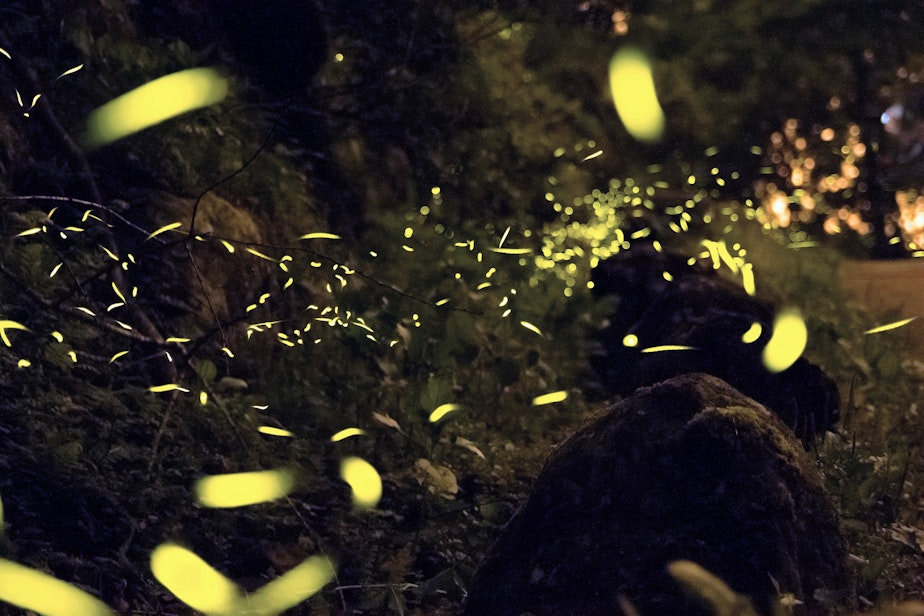We should just call them Washington's 'under-performing beetles'

KUOW listener Tom Miller relocated to Seattle from Minnesota, looked around and wondered, “Where are all the mosquitos and fireflies?
We brought University of Washington entomology professor Patrick Tobin into the studio to answer that question with Bill Radke on The Record.
First off, the lack of mosquitos (not that we’re complaining).
Tobin said we get our rainy season in the fall and winter – not a good time for insects to be reproducing. And even though we do have a lot of water, most of it is moving, too deep or too cool.
The result is fewer generations of bugs. For instance, in Florida Tobin said a mosquito can go from egg to adult in seven days (terrifying). But with our lower temperatures here, it could take a month.
Sponsored
Know what does make for a great mosquito habitat in urban environments? Bird baths.
OK, so where are the fireflies?
Tobin said we do have them here, but the ones we have don’t produce the light.
Radke: “Wait a minute, a firefly that doesn’t produce light? Isn’t that the one qualifying feature to be a firefly?”
Tobin: “You would think so, but they’re also not flies; they’re actually beetles.”
Sponsored
There’s over 2,000 species of fireflies/lightning bugs/howeveryousaythems. The ones that do produce light are using this tool to find a mate. Ours in Seattle are daytime fliers or use other cues to find a mate.
“The species we have here have not evolved that strategy,” Tobin said.
So we don’t have the dramatic nocturnal shows in the Northwest, but fireflies are also on the decline in the east. One reason is habitat loss. But another big cause is light pollution.
Tobin: “They’re flashing to find a mate and if light pollution is interfering with the ability for a male or female to see that flash pattern, they don’t find each other.”
Radke: “They’re crying out for company and their mates can’t see the light? That’s the saddest thing I’ve ever heard!”
Sponsored
(But actually, this might work out for some. Tobin said there is a species of “femme fatale fireflies” that flashes with the sole purpose of luring in a male to eat.)
Tobin said the fact that we don’t have the bugs that depend on flashing light in Seattle — which has a fair bit of light pollution itself — could be a benefit to the populations we have here.
Produced for the Web by Kara McDermott.


